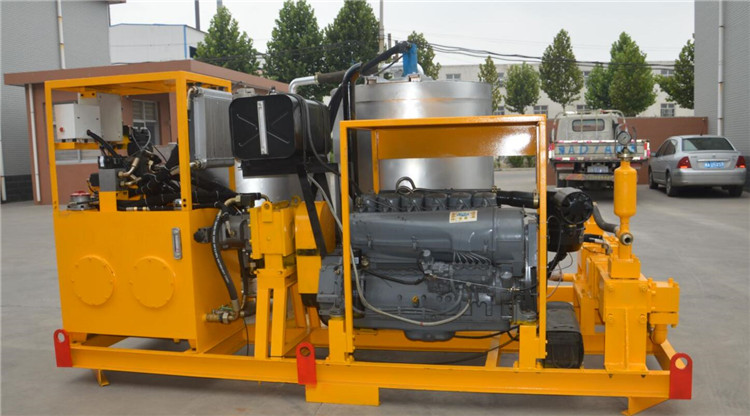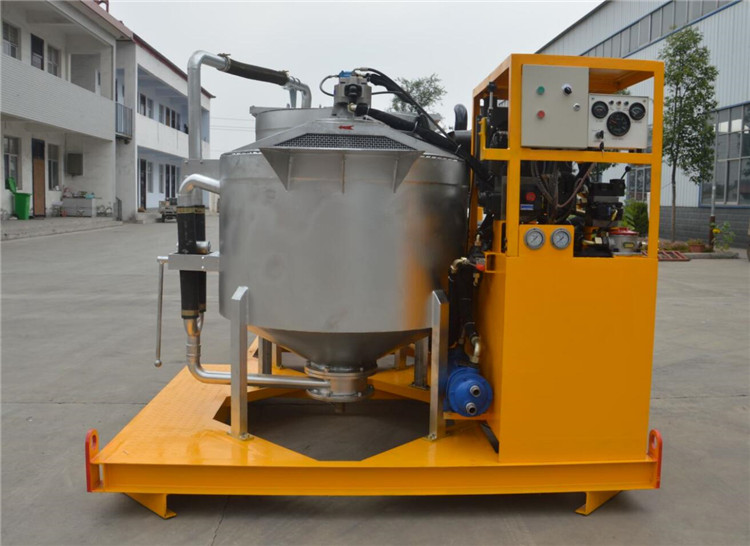GGP800/1200/200PI-D Diesel Engine Piston Grout Pump Station
Piston pumps are not usually the first choice for grouting service. In addition to wear, some may have difficulty in handling the wide range of pressure output often required. Although similar pumps are used it some grout mixers, they run at more or less constant speed,Limited usage makes it not worthwhile to go into further detail here. These pumps have pistons reciprocating in close-fitting cylinders. Those used for grout are usually double acting: while a piston moves in one direction, expelling grout, suction forms on the other side, pulling grout in ready for the next expulsion stroke. Nonreturn valves are necessary to close off the outflow port while the inflow is taking place, and vice versa. The basic arrangement is shown in Figure. The flow of grout to the pump is coming from underneath at left; the pumped discharge goes out at the top to the right.the piston stroke is toward the right; the arrows indicate the flow. Ball valves are shown (see later for other types of valves).The upper right one has lifted off its seat under pressure from the piston via the grout, and the lower left one has also opened, in this case due to the suction from the back side of the piston. This lets grout into the cylinder ready for the return stroke. The other two valves are closed for the moment; they open for the return stroke.Piston pumps used for grouting usually have two cylinders, called Duplex. Four- and six-cylinder pumps have been used at times for particularly large jobs; these can be massive pieces of machinery only suited to a large pumping station. The modern much lighter type of two-cylinder pumps mostly have the pistons at each end of one shaft; the shaft is powered in between them.
In this particular arrangement the grout has access only to the outer end of the two pistons-the space between is occupied by the driving fluid, which can be air or hydraulic. this pump shows the piston moving to the right, and grout flows are shown by arrows. These pumps are usually more compact and more portable than those with an external motor Pumps with more than two cylinders tend to have the cylinders side by side, similar to a car motor, with the pistons powered by a crankshaft. When working hard most of them vibrate and have to be well anchored to an engine bed or some other substantial base.
Motors for piston pumps can be reciprocating,placed between the pistons as shown, or can be separate, operating the piston directly or through a mechanism. Air, hydraulic, electric, or internal combustion motors can be used. However, in order to get the variable outputs needed, motors that give a constant speed, such as electric and some internal combustion motors, must have variable-speed drives between them and the pump. These drives are usually hydraulic, housed in a large heavy box, which makes the pumps hard to move around a site. They, therefore,tend to be mostly used in large pumping stations rather than being moved near to the grout holes.The power needed for piston pumps ranges from just a few horsepower to hundreds, depending, obviously, on the capacity and output pressure required Available outputs likewise range from small to very large. Too many makes and variants are on the market for listing here.Chrome plating or hardening is advisable on the parts in contact with the grout. Even then wear can be rapid, especially when handling a sand-cement grout.




